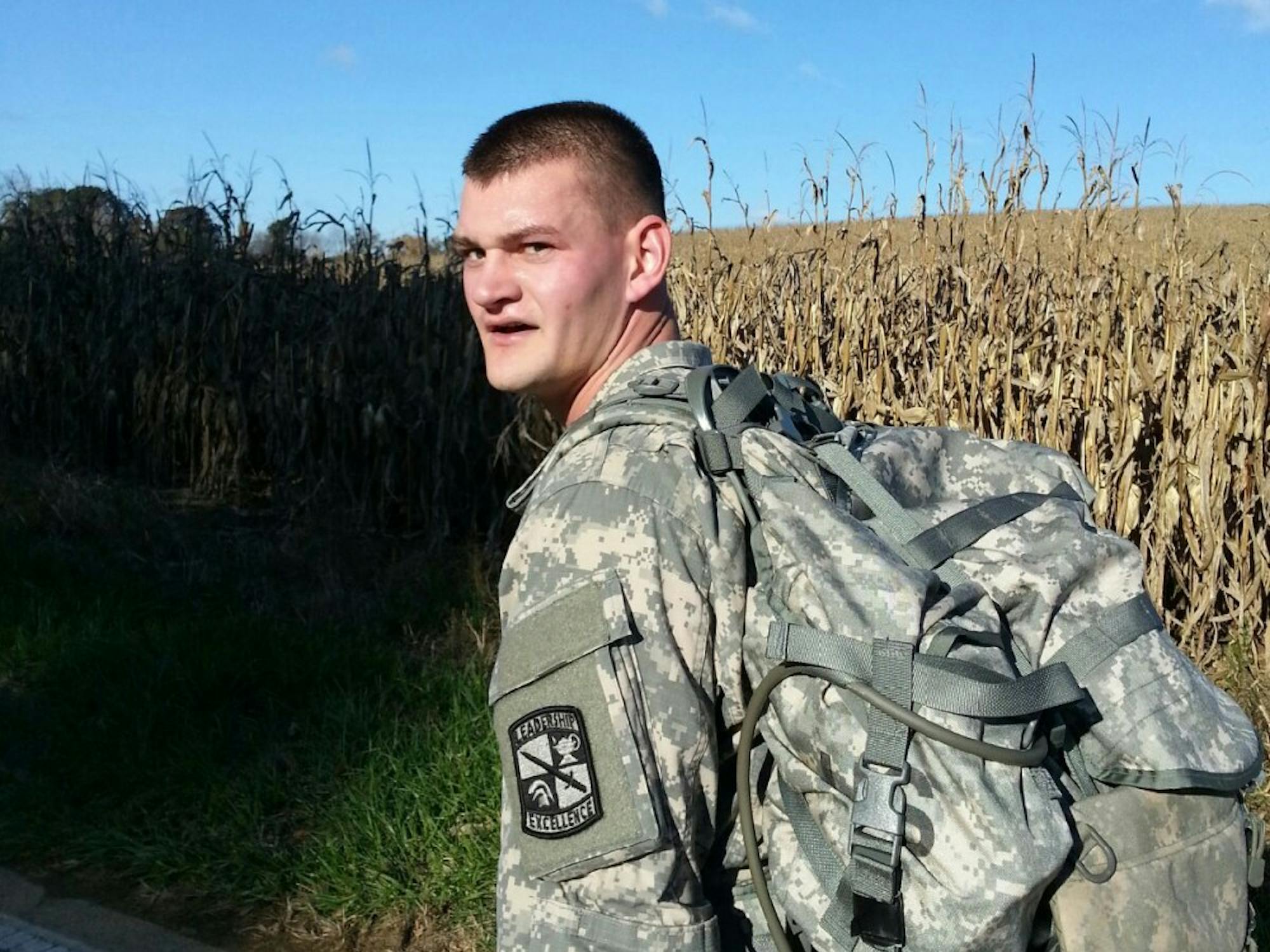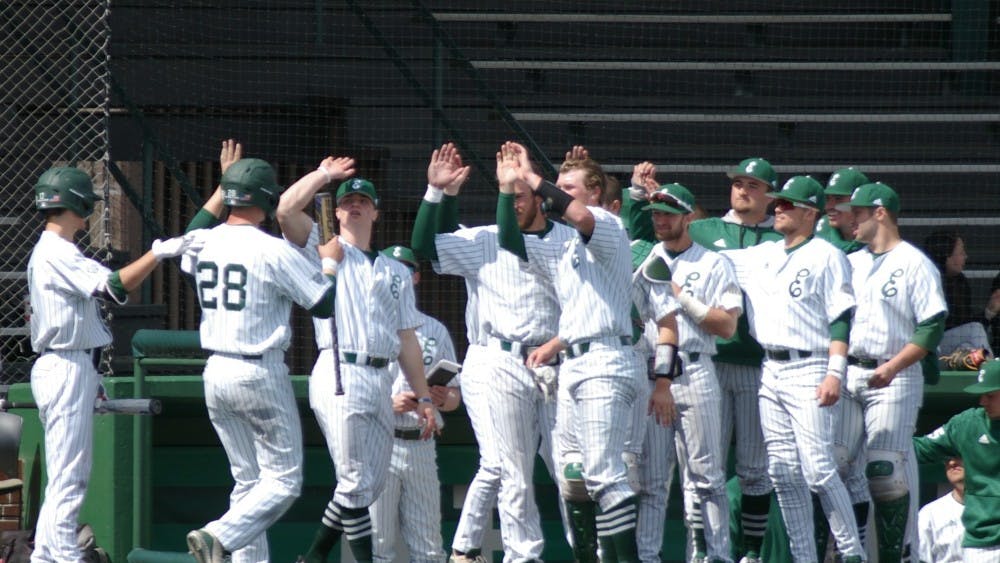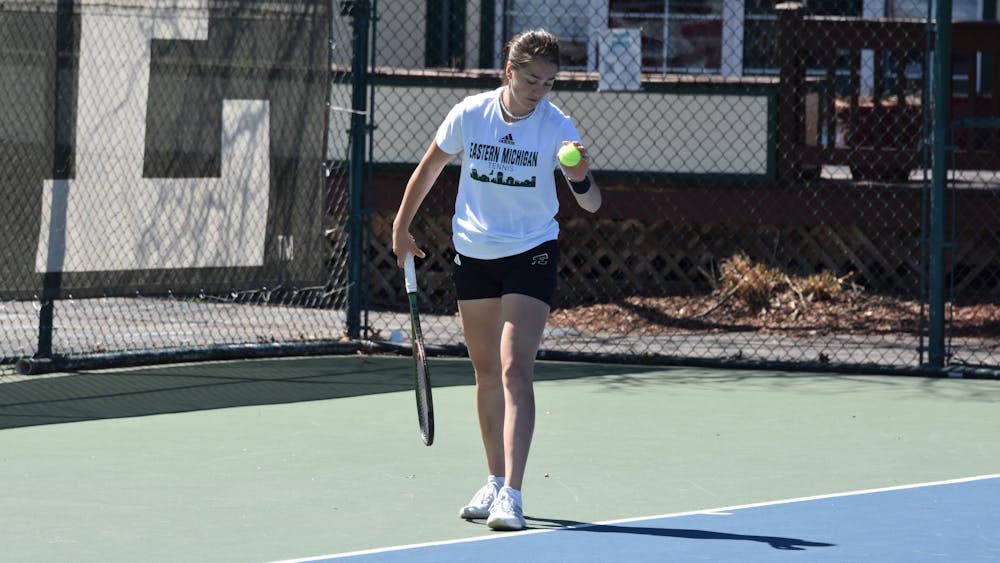The 13th annual Norwegian Foot March was held Saturday at the University of Southern Indiana, and four cadets from Eastern Michigan University’s Reserve Officers Training Corps participated in the event and marched 18.6 miles in roughly four hours. EMU senior and ROTC Cadet Steven Shak was the first Eagle to finish with a time of 3 hours and 19 minutes.
“To me, it’s about setting a goal and achieving it,” said Robert Baker, a lieutenant colonel in the Army, commandant of EMU’s ROTC program and a professor of military science.
“I am proud of the initiative and leadership displayed by cadets Jalali, Shak, Titus and Bock and am eager to support their efforts,” Baker said.
Nearly 700 cadets, soldiers and civilians from colleges and military bases around the nation registered to march around USI’s campus in Evansville while carrying a 25 pound rucksack and wearing military uniforms. Participants from 29 states, The District of Columbia and 20 different colleges were represented at the event that has extensive guidelines and regulations. Marchers had the option to carry nonperishable food that was donated to a supportive housing complex for homeless veterans with disabilities.
“We’ve got thirty pounds of canned food to deliver to the charity there,” said Hudson Jalali, a senior at Spring Arbor University and the EMU battalion cadet that organized the foot march team.
“This will be my third year participating in the Norwegian Foot March,” Hudson said. “I do it to push myself for a faster time and to help bring a good name and recognition for the EMU ROTC program.”
Nils Johansen is a retired Norwegian artillery reserve officer and USI university division advisor. In a press release, he said the foot march is a tradition that soldiers attempt during Norwegian boot camp.
“There are often badges that Norwegian soldiers can earn ranging from skiing to an expert infantry badge and various track and field events including modern pentathlon,” Johansen said. “The foot march is considered a tough one, requiring physical stamina and mental capacity. It was instituted in 1915 and as a model, duplicates what a soldier could be expected to do in the field, move 30 km and carry a pack with rations.”
Some Eagle cadets said the race took preparation and training. Spring Arbor University junior and EMU ROTC cadet Alexander Bock said he wasn’t daunted by the challenges of a long distance march.
“We’ve done [the march] before,” Bock said. “It shouldn’t be a problem. We’ve been carb-loading for a week, and we’ll have a couple bottles of water and a camelback each, so we’ll stay hydrated.”
Bock said he was proud of the effort displayed by the EMU ROTC squad that partook in the event.
“The four of us rucked hard and got through it,” Bock said. “The most challenging part was the wind. The wind in Indiana was really strong, and the route they chose had a lot of hills, but the straight-aways were windy as all get out.”
Sergeant First Class and EMU cadre commander Edwin Maus was the supervisor for EMU’s cadets and was responsible for driving seven hours to and from the event. Maus has served 21 years in the Army and is an EMU military science professor. He said activities like the Norwegian Foot March are good for morale.
“It builds motivation and Esprit de Corps amongst the ROTC command,” Maus said. “It also has physical fitness and leadership abilities that are involved with a long march like this.”








